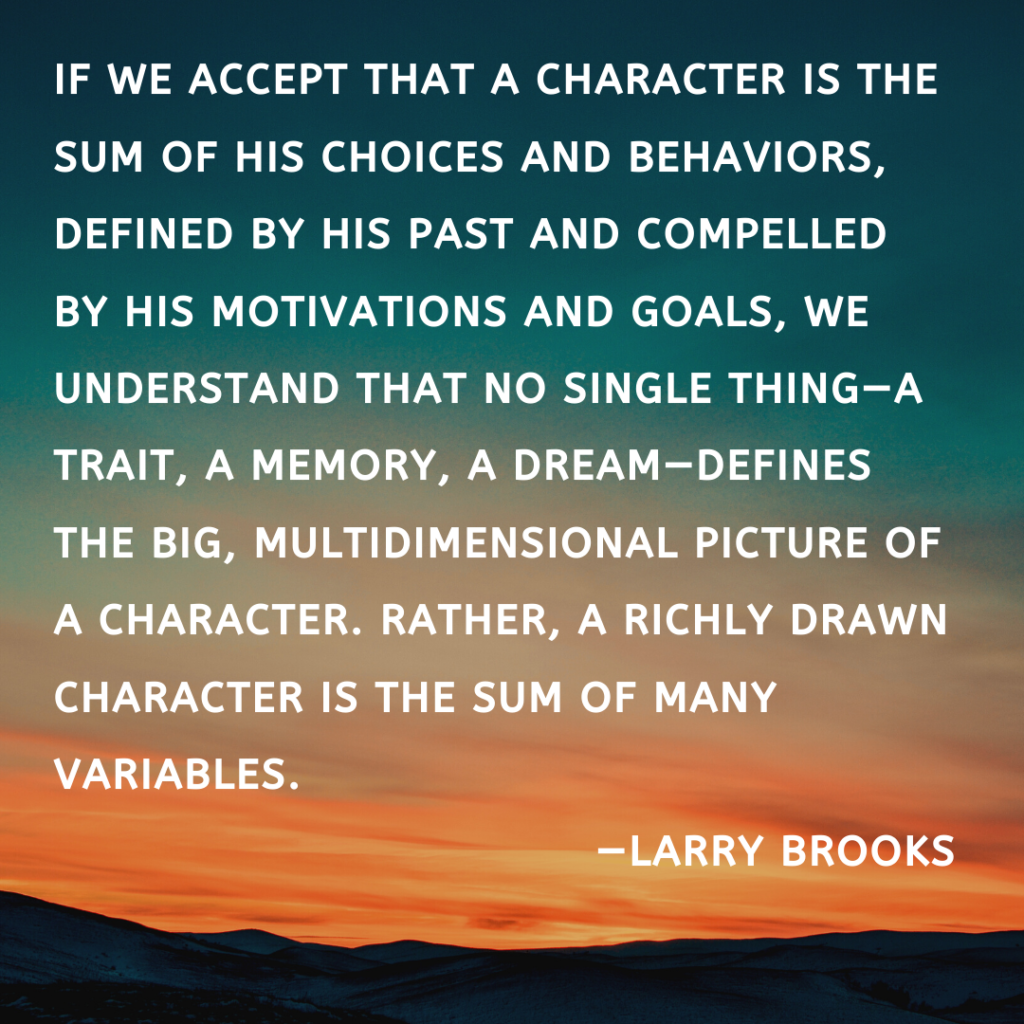Define story in one word.
Did you say “character?” Maybe “plot?”
Many people do, according to author Larry Brooks. It’s not quite right, though. The essence of story is conflict. With conflict, a force opposes your protagonist’s goal. It stirs dramatic tension and readers’ emotional investment. Without conflict, you have something more like a diary, says Brooks in the first of five chapters devoted to character in his book, Story Engineering.
Character is one of four essential story elements. It must be blended with concept, theme, and structure:
Character is the catalyst that empowers everything else in your story. Characters experience theme. Characters act out along a linear structure. Characters live out the plot and the antagonistic forces that make plot possible.
Knowing what character is places fiction writers on solid ground. But we need more than a definition. More than the guidance magazine articles and conferences often provide. As Brooks says, guidelines about writing character tend to be glittering generalities that leave us with little understanding of how to begin. Where, then, do we go?
Seven Key Characterization Variables
This is the place to start. Seven realms where you can live and work, illuminating your characters, Brooks says:
- Surface affections and personality: What the world sees and perceives about someone, like habits and quirks.
- Backstory: What happened before your story starts that influences who your character is now.
- Character arc: How your character learns, grows, changes, and conquers her biggest challenges.
- Inner demons and conflicts: These help determine a character’s outlook, beliefs, decisions, and actions. They can limit your character, too.
- Worldview: An adopted belief system and moral compass; it’s the outcome of backstory and inner demons, combined.
- Goals and motivations: These drive a character’s decisions and actions. He believes the benefits of his decisions and actions outweigh the costs or compromises.
- Decisions, actions, and behaviors: These are the sum of all the variables above. Everything rests on this variable. If you successfully weave together the first six variables before your character arrives at number seven, her actions, behaviors, and decisions will pack a meaningful punch.
Character is Part of a Story, not the Whole
Repeating what Brooks said earlier: Many writing experts point to the core of storytelling as character. That’s not inaccurate. Nor is it the full truth. He circles back to this because it’s critical for authors to grasp before they begin writing.
Good storytelling means weaving together four different elements—concept, character, theme, and structure. To do this, authors use two skill sets: writing voice and scene execution.
Stories have several moving parts. Character is one. Likewise, rich characters have moving parts. Brooks breaks down each of the parts. He defines and categorizes them so we can approach each methodically and effectively.
He offers the analogy of a character-development machine. Remember the seven variables we talked about above? Think of each one as a separate dial, with settings from one to ten. These seven dials give us at least ten million unique settings for each character we create.
All we have to do is adjust the dial settings to the context and nature of our story. The rest is art. And fun.
No two people who populate our life’s landscape are alike. Our fictional characters shouldn’t be, either. That’s good art, imitating life, in all of its imperfect glory.

Hi Kristina,
Thank you for these great articles. I have the book Story Engineering, Story Physics, and I think it’s called, “Great Stories Don’t Write Themselves.” When developing our characters, is it better to start in the “beat seat” stage and mapping out our characters’ dimensions, etc.? I would think this is better because simply by outlining or writing, dimensions may be missed.